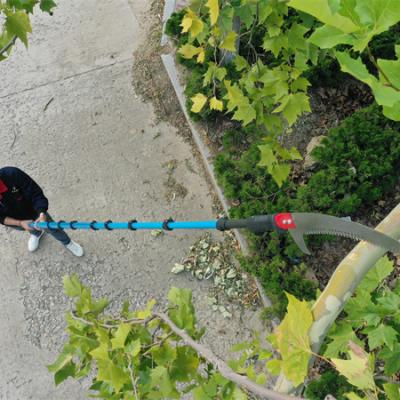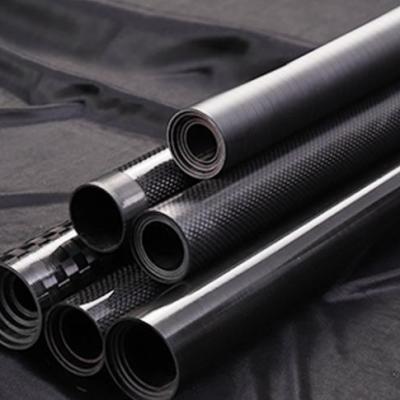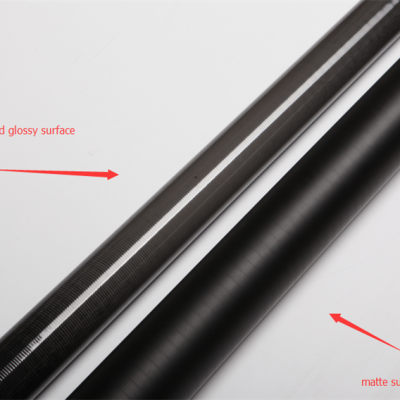Outrigger Basics
An outrigger consists of a base that is bolted to the boat, a pole that slides into the base, and rigging for attaching fishing lines to the outrigger.
Outrigger bases typically allow the pole to be swung out away from the boat for trolling and back in for running. Most also allow for adjustment of the upward angle or “pitch” of the outrigger pole. Bases may be mounted on T-tops, hard tops, cabin sides or gunwales.
fishing boat using outriggers- Boat Outfitters
Outrigger poles range in length from 15’ to more than 35’. For outboard-powered fishing boats up to 45 feet or so, 15’ to 25’ poles are most common. Poles longer than about 25’ require spreaders for support and added stiffness and are typically found on sportfishers.
Rigging systems range from simple to complex but all serve the same basic purpose — bringing release clips close to the boat so that lines can be attached and then moving them farther out the poles. Most outriggers are set up to run one to three lines each.
Outrigger Pole Lengths
The first and most important thing to consider when adding outriggers is the size of your boat. Outriggers that are too long and heavy are not only unwieldy; they can also destabilize small boats. For boats under around 25’ with a beam under 9’, 15’ to 18’ poles are typically the best choice. A handy rule of thumb for outboard-powered boats is that the tips of the poles shouldn’t extend past the props.
Try to be realistic about how many lines you’ll fish.
Another consideration is the number of lines you plan to run on each ’rigger. Although it’s possible to run two lines on a 15’ pole, an 18’ or longer pole is a much better choice. With a double-rigged 15’ pole mounted on a T-top or hardtop, the inner line isn’t more than a few feet past the gunwale. On the other hand, try to be realistic about how many lines you’ll fish. Trolling four lines from outriggers plus two flat lines and a center “shotgun” line requires a lot of expensive tackle and a lot of work from your crew.
You’ll also want to consider practical constraints like bridge clearance, storage and trailering. Make sure whatever outrigger setup you choose is compatible with your slip or lift and with any bridges you have to fit under.
Telescoping vs. Fixed Length Pole
Whether an outrigger pole is fixed length or telescopic is its most obvious characteristic, and the trade-offs are fairly straightforward.
Telescoping poles can be collapsed for bridge clearance, trailering, dry stack storage, etc. Collapsing the poles when not in use also makes it easier to cast from the cockpit. And when removed, the collapsed poles are much easier to store than fixed length poles.
Fixed length poles, on the other hand, are generally stiffer, stronger and lighter weight. Their relative simplicity also translates to added durability.
The bottom line is that, all else being equal, fixed length poles offer better performance, but tel escoping poles are far more convenient for many boaters.
fishing boat using outriggers- Boat Outfitters
Aluminum, Fiberglass and Carbon Fiber Outrigger Pole
Modern outrigger poles are made from aluminum, carbon fiber or fiberglass, each of which comes with its own pros and cons.
Carbon fiber offers the ultimate in stiffness and light weight. Stiffer, lighter poles bounce less when running, putting less strain on the bases, the mounting surface and the poles themselves. Stiffer poles also work better for pulling dredges, spreader bars and other tackle that puts heavy strain on the poles. Carbon poles are costly, though, and although they don’t bend like aluminum, they are more brittle and do occasionally break.
Aluminum is heavier and more flexible than carbon and can bend under the strain of dredges or spreader bars. It is also more susceptible to corrosion than carbon or fiberglass. Aluminum, though, remains a good choice for outrigger poles and represents a great value for recreational anglers who don’t want — or need — to drop the price of a small car on a set of outriggers.
Fiberglass is the most economical choice, but it is relatively flexible and heavy and best suited for short poles and small boats.
Keep in mind that the longer the outrigger pole, the more important stiffness and light weight become. In other words, the advantages of carbon over aluminum will be much more apparent in a 20’ pole than a 15’ pole. Likewise, heavier lures, more lines and faster trolling speeds all amplify the differences between materials.
Outrigger Pole Diameters
Most outrigger poles under around 25’ are 1-1/2” in diameter at the base. Many 15’ poles, though, have a 1-1/8” base diameter. The smaller diameter poles — the smaller mounts they’re compatible with — are less expensive and perfectly suitable for smaller boats and lighter-duty use. Even in shorter lengths, though, 1-1/2” diameter poles are significantly stiffer.
Outrigger Bases
Outrigger bases range from simple gunwale mount models to sophisticated, hydraulic mounts designed for the sides of sportfisher cabins. On most center console and dual console fishing boats, though, outriggers are mounted on the T-top or hardtop. Although there are many differences in features and capabilities between models, the main thing that differentiates them is the degree to which they can be controlled from beneath the top.
The main thing that differentiates them is the degree to which they can be controlled from beneath the top.
The simplest and least expensive models, like Taco Marine’s Top Mounting Grand Slam 170, are controlled entirely from the top. Adjusting pitch or swing of the poles requires reaching the top of the base — usually by standing on a gunwale.
Other bases, like the XD 1.5" Top Mount Outrigger Base, allow control of swing but not pitch from beneath the top. A crew member standing on deck can deploy the outriggers by turning a handle on the underside of the mount, but tilting the ‘riggers up or laying them down requires reaching the top of the bases.
The most convenient bases, like the XD Crank Top 1.5" Outrigger Mount, feature controls for both pitch and swing from the deck.
Other considerations include range of adjustment and number of available positions in both directions, how adjustments are made and whether the shape of the base and handle are compatible with your particular top.






